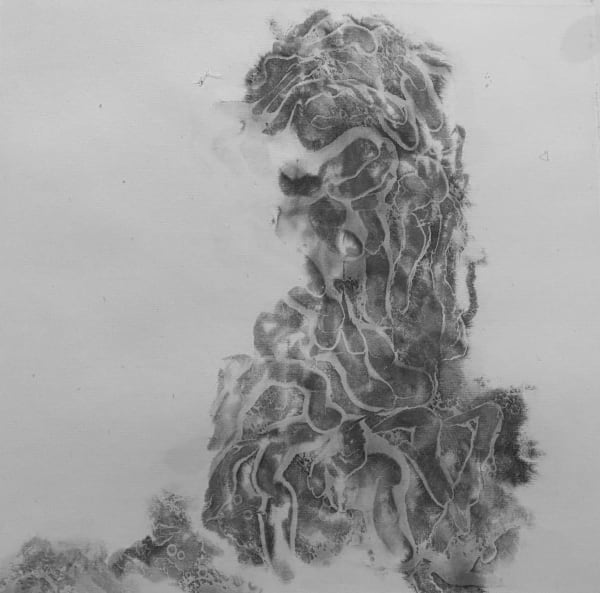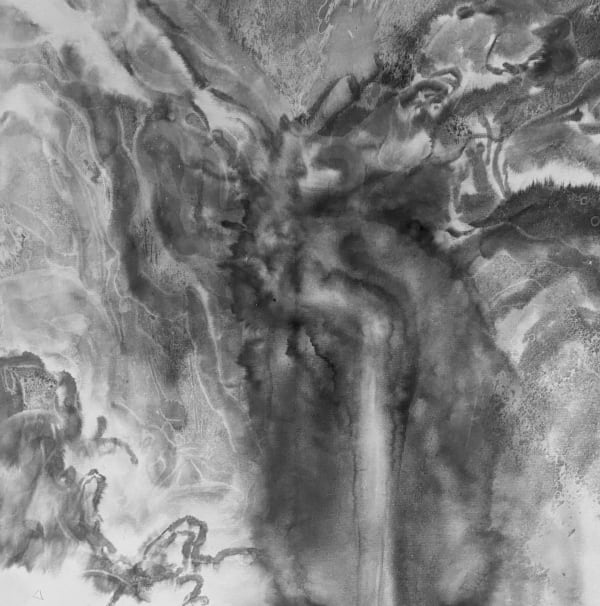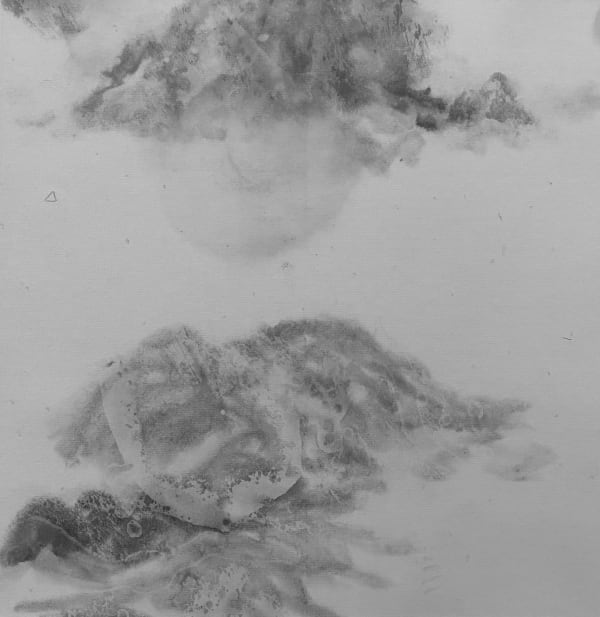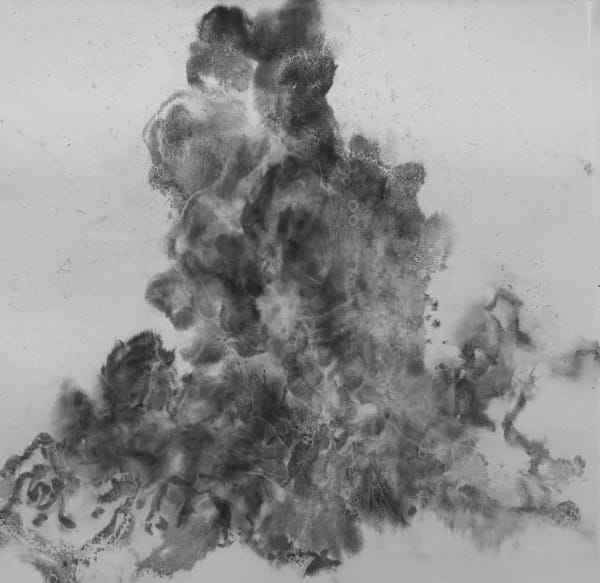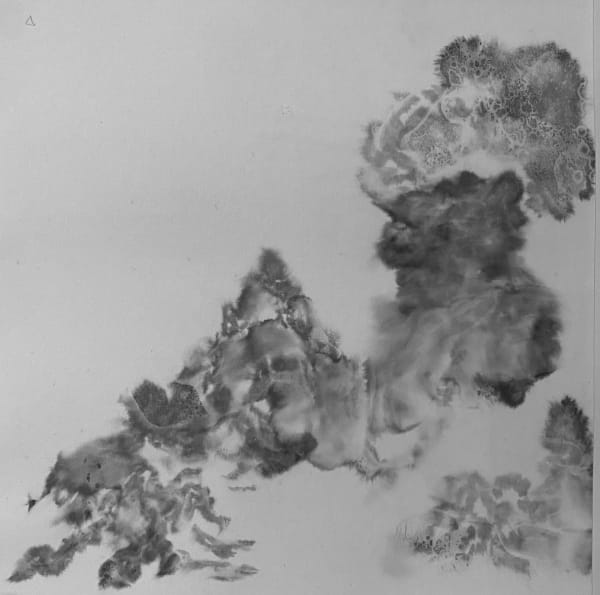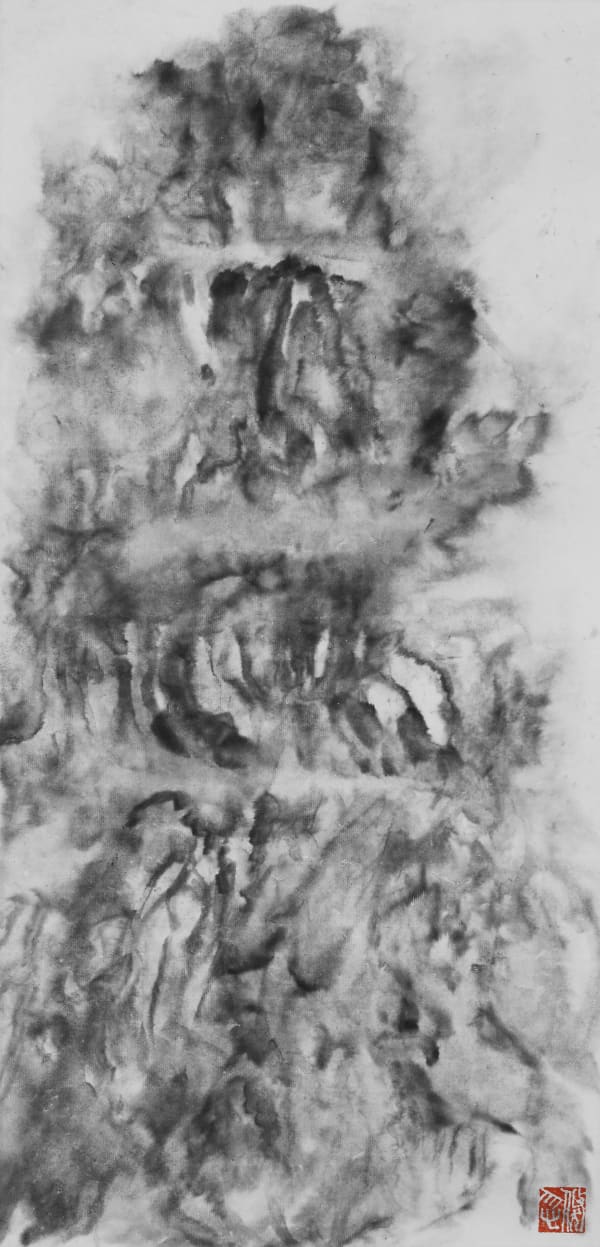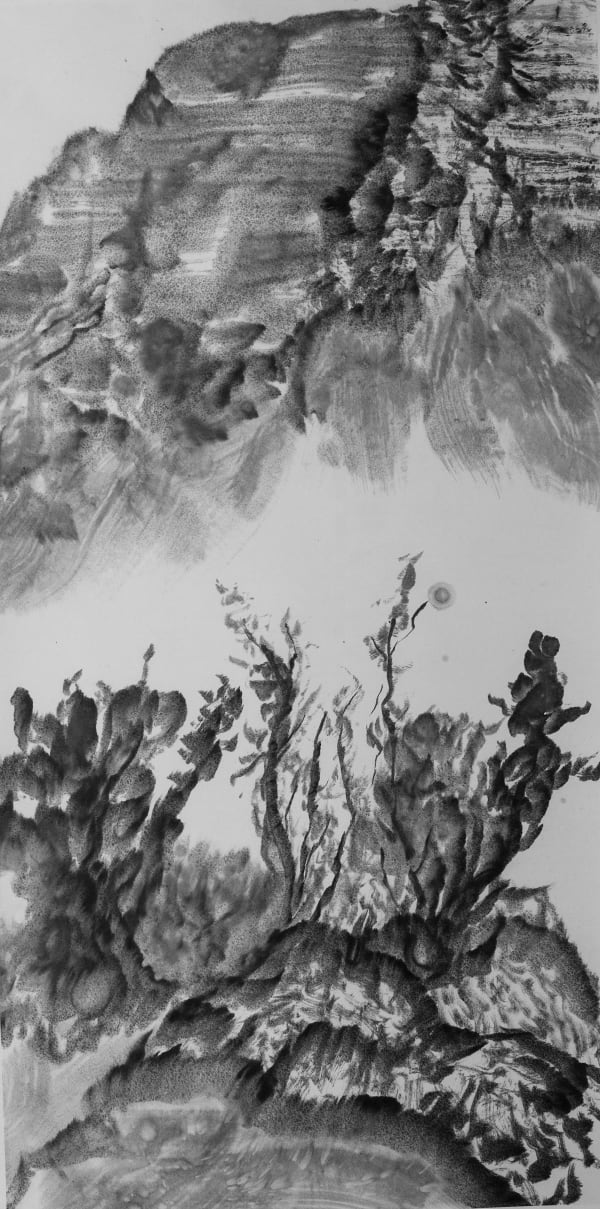-
“ The Taihang Mountains paintings evoke the lofty mountains and valleys of Song landscapes, but what lingers in the viewer’s mind is not their compositions, but rather the vivid rhythms of the myriad things communicated through the vibrations and nuances of brush and ink. ”
—Bingyi, Treatise on Landscape, 2022
-
Los Angeles-based artist, writer, film-maker, curator, cultural critic, and social activist Bingyi (b. 1975, Beijing) will premier Land of Immortals a new body of contemporary ink painting in a joint exhibition between INKstudio (Beijing) and Joan B Mirviss LTD (New York) during Asia Week New York 2022. Bingyi’s contemporary ink paintings will be shown alongside the contemporary ceramics of master artist Kondō Takahiro (b. 1958, Kyoto) in his concurrent solo exhibition Kondō Takahiro: Making Waves.
Land of Immortals will feature Bingyi’s most recent landscape paintings, created during and following her 2020-2021 research trip to the Taihang Mountains in Northern China’s Eastern Yellow-River Loess. The Taihang Mountains were home to three ink painters of the Song Dynasty (960 – 1279) who defined China’s monumental landscape painting tradition: Fan Kuan (c.960 – c.1030), Guo Xi (c.1020 – c.1090), and Li Tang (c.1050 – 1130). From this history, Bingyi reconstructs an alternative landscape tradition that speaks not just to classical art connoisseurs in China and East Asia but to the global audiences of contemporary art today.
-

-
Artworks
Click or tap twice on large images for additional views
-
Unlike the conventional history of the “literati” landscape, which is primarily Confucian in nature, Bingyi’s speculative, heterodox history employs themes both Buddhist and Daoist to articulate a world of creative change and transformation that encompasses both nature and the nature of mind.
Eight Views of Bewilderment
In the album, Eight Views of Bewilderment, Bingyi imagines an alternative to the Eight Views of the Xiao and Xiang Rivers a classical poetic and pictorial theme set in the Northern Song. In Bingyi’s conception, the eight views represent eight kinds of phenomenological experience accessible to the human mind. In naming her album wangxiang 罔象八景, she cites a story from the Zhuangzi (c. 4th Century B.C.) in which the unlikely character Xiang Wang 象罔 “Appears to be Ignorant” finds the way lost by the King when others who appear more qualified fail.
-
-
Land of Immortals
In the four hanging scrolls, Land of Immortals, Bingyi steps back into Han Dynasty (206 BC – AD 220) cosmology to explore the correspondence between the celestial and the earthly, the cosmic and the bodily. Each scroll—Green Dragon (East), White Tiger (West), Vermillion Phoenix (South), Black Tortoise and Snake (North)—represents one of the Si Xiang 四象or Four Mythical Gods and its associated cardinal direction and stellar constellations. Adding a center to the four cardinal directions, however, transforms the four directions into the five phases—Wood, Metal, Fire, Water and Earth. In this way, space (the four directions) and process unfolding in time (the five phases) find correspondence and unity.
-
Taihang Rhapsody
In the two hanging scrolls White Clouds and Dark Beasts and Sound of the Empty Valley, Bingyi explores the mutually constitutive relationship between form and emptiness, active and passive, change and continuity—what in early Chinese thought is called yang and yin—alternating in never ending cycles of change and transformation. White Clouds and Dark Beasts cites a poem by Du Fu (712 – 770)—“a white cloud at one moment may look like a grey dog in the next”—conveying the idea that circumstances change from moment to moment in strange and unexpected ways. Sound of the Empty Valley, on the other hand, references Fan Kuan’s iconic landscape Travelers Among Mountains and Streams and how the still and empty space surrounding a monumental central peak is nevertheless resonant with movement and sound.
-
Paramita
In the monumental single horizontal scroll, Paramita—literally “the Other Shore”—Bingyi depicts the land of illusion and human suffering and the other shore of perfect enlightenment linked by a bridge. The image of crossing over to the other shore is the realization of perfect enlightenment. In Chan Buddhism, however, the “other shore” of perfect enlightment is inseparable, identical, one-and-the-same with the shore of human suffering. The place that you left and the place where you arrive are one place.
-
-
About Bingyi
Over the past decade, Bingyi has developed a multi- faceted practice that encompasses land and environmental art, urban planning, site-specific architectural installation, musical and literary composition, ink painting, performance art, and filmmaking. Adopting a non-anthropocentric perspective and channeling nature’s creative agency, her work is centrally concerned with the themes of ecology, ruins, rebirth, and poetic imagination. After pursuing university-level studies in biomedical and electronic engineering in the United States, Bingyi earned a Ph.D. in Art History and Archeology from Yale University in 2005 with a dissertation on the art of the Han Dynasty.
Bingyi has exhibited internationally at the Los Angeles County Museum of Art (2021), the Brooklyn Museum (2019) the National Art Museum of China (2017), Shanghai Museum of Contemporary Art (2016), Istanbul Modern (2016), Museo de Arte Contemporaneo de Alicante, Alicante, Spain (2014), St. Johannes-Evangelist-Kirche, Berlin, Germany (2012), Smart Museum of Art, University of Chicago, Chicago, USA (2010), Galerie Erna Hecey, Brussels, Belgium (2009), Contrasts Gallery, Shanghai, China (2009), and Max Protetch Gallery, New York, USA (2008). Her works have also been included in Surveyors, Albright-Knox Art Gallery, Buffalo, USA (2011), and Yipai, the Opening of the New Wing, Today Art Museum, Beijing, China (2009), and featured at The 7th Gwangju Biennale, Annual Report: A Year in Exhibitions, Gwangju, South Korea (2008).
-
About INKstudio
INKstudio is an art gallery based in Beijing and New York. Its mission is to present Chinese experimental ink as a distinctive contribution to contemporary transnational art-making in a closely-curated exhibition program supported by in-depth critical analysis, scholarly exchange, bilingual publishing, and multimedia production. INKstudio's program encompasses Postwar and contemporary artists from China, Taiwan, Hong Kong, Korea and Japan including Bingyi, Chang Yahon, Chen Haiyan, Cheng Yen-ping, Dai Guangyu, He Yunchang, Hung Fai, Huang Chih-yang, Inoue Yu-ichi, Jeong Kwang-hee, Kim Jong-ku, Lee In, Li Jin, Li Huasheng, Lim Hyun-lak, Lim Ok-sang, Liu Dan, Peng Kang-long, Ethan Su Huang-sheng, Tao Aimin, Wai Pong-yu, Wang Dongling, Wang Tiande, Wei Ligang, Xu Bing, Yang Jiechang and Zheng Chongbin and exhibits works of diverse media, including painting, calligraphy, sculpture, installation, performance, photography, and video. Since its inception in 2012, INK Studio has regularly appeared at art fairs such as the Armory Show (New York), Art Basel Hong Kong, and West Bund Art & Design (Shanghai) and placed works into major public collections, including the Metropolitan Museum of Art, Los Angeles County Museum of Art, Brooklyn Museum, and M+, Hong Kong.
About Joan B. Mirviss LTD
With more than forty-five years of experience, Joan B. Mirviss remains a pillar in the field of Japanese art. As a dealer, scholar, curator, and advisor, she has been the driving force championing the top Japanese clay artists, who she represents exclusively, and whose works she has placed in major museums around the globe. Widely published as a highly-respected expert, Mirviss has built many institutional and private collections of Japanese art. JOAN B MIRVISS LTD exhibits modern and contemporary Japanese ceramics, ukiyo-e, and Japanese paintings from its exclusive Madison Avenue location in New York City. For more information, please contact us at 212-799-4021 or director@mirviss.com.
INKSTUDIO WITH JOAN MIRVISS AT ASIA WEEK NEW YORK 2022, 14 - 26 March 2022

